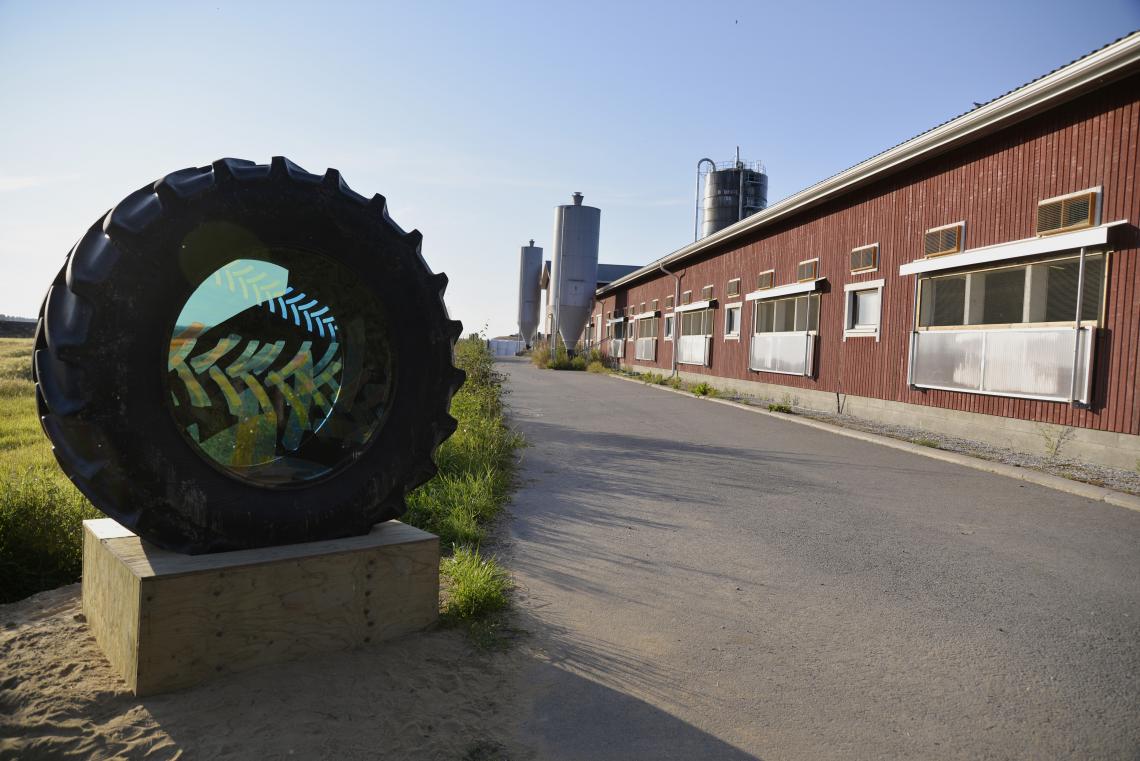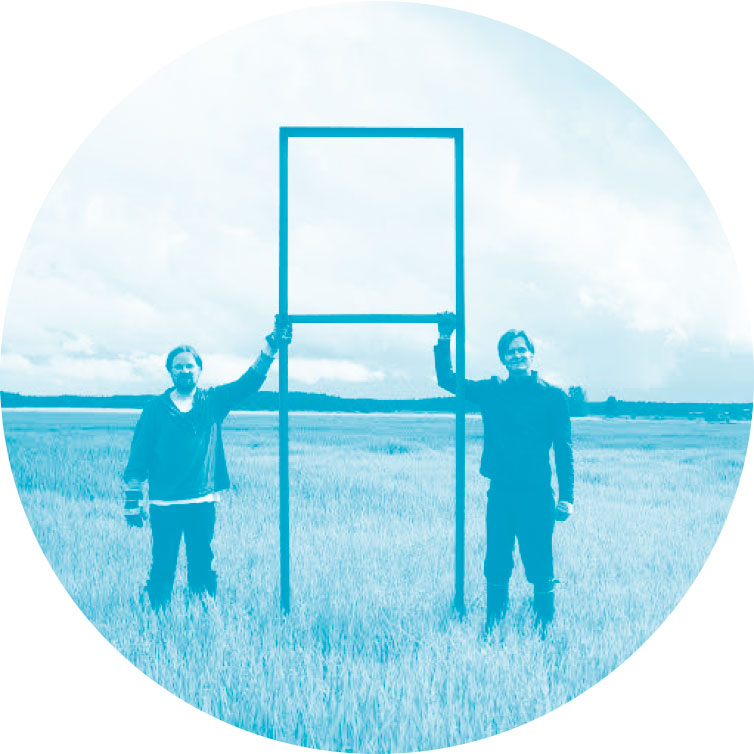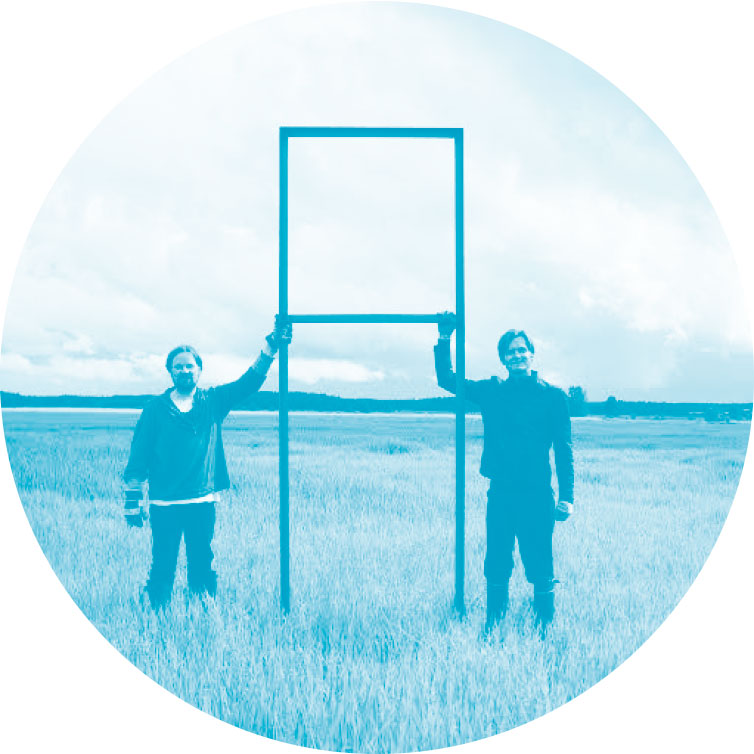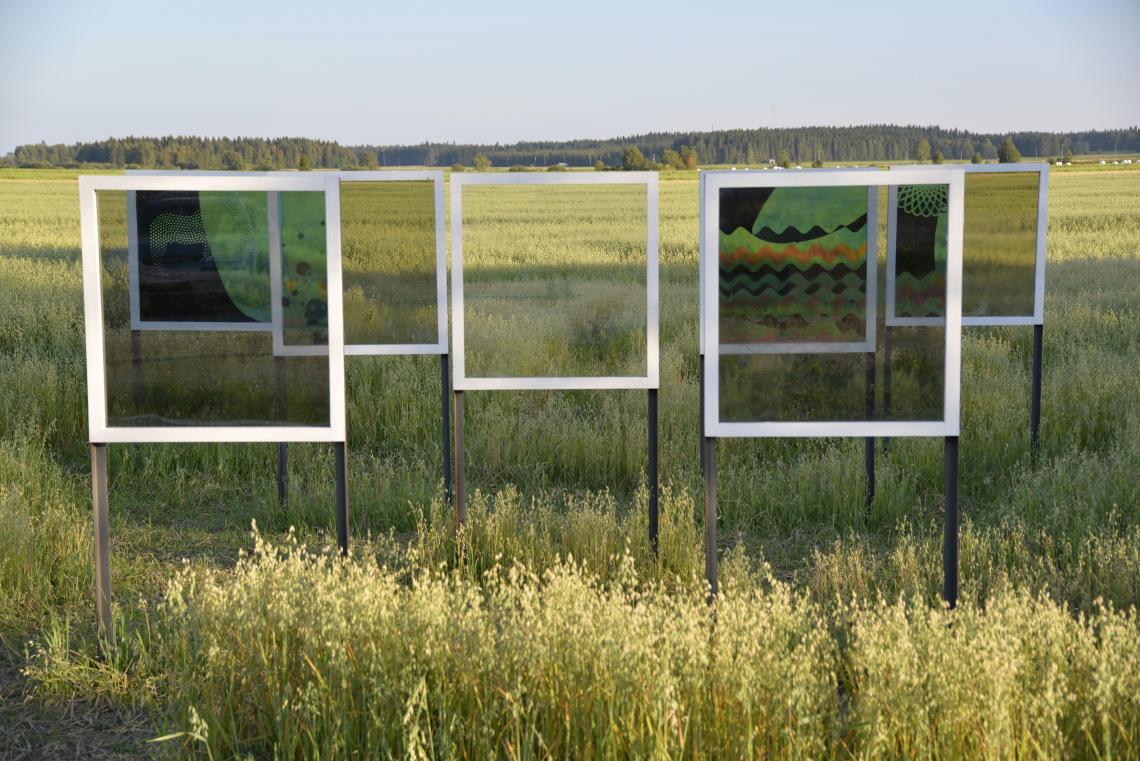
Windows and filters
Design is a central feature of Finnish culture with architecture and the design of household good bearing a distinctive style widely sought after across the world. Design pieces often emphasise the values of colour and form, a fact which can be seen emulated in the works of many Finnish fine artists. In the case of the work Pylväsvuo (meaning literally, ‘the flux or stream which runs across the village’) the artists have been influenced by the architectural motifs common to the traditional country houses of Ostrobothnia and the local landscape, as well as the tools used in everyday rural life. Focusing on the village of Pylväs, which is approximately 140 km from Oulu and has little over 100 inhabitants, five works will be made and displayed outdoors along the Ängesleväntie (Ängeslevä road), about one kilometre from the Pylväs village community house, where people gather to engage in pastimes such as sports and other leisure activities.
The five works on display were designed to lead the viewer on a route throughout the village, as a reflection on the tools and architecture of the area meet an investigation into light as a central component which shapes the inhabitant’s relationship with the natural landscape. The works take the form of himmeli (charms originally used to help ensure a good harvest), a cart for transporting milk from a central point in the village, a tractor wheel, the negative space created by the railing and balustrades of the bridge over the village stream, and a set of old window frames made in the traditional style, to be suspended over a field close to the Ängeslevä road.
Each piece evokes collective memories linking the villages inhabitants to past craft traditions, whilst the use of contemporary materials - in particular, polarizing filters - plays tricks on the imagination as images appear and disappear. Due to the particular properties of polarizing filters, which are incorporated with the works along with mirrors, types of ‘windows’ are created, which shift, like the landscape, according to the vantage point of the viewer. For example, as the viewer moves nearer a tractor wheel displayed along the route they will see traces of the intended activity of the wheel in the form of tracks - from tractors, horses and farming machines. These images come into view on the surface of the polarizing filters which form a kind of window onto rural memory.
Each location tells its own narrative, as with the bridge which will feature several images which refer to unconnected aspects of the village’s life and history, including: tractor tracks in the boreal ice, and the wartime story of a plane which crashed next to the bridge. The works were based on extensive research collecting stories and images from the village which form part of a large database that has informed the project.
The work reflects the ongoing practice of the artists, Jaakko Mattila and Jussi Ängeslevä, who on this occasion combine their varied practices, the former more painterly, and the latter more involved in scientific process. Whilst both widely travelled, they feel comfortable in their home environment of Ostrobothnia, where the unique landscape has undoubtedly shaped their respective practices. The interests of both artists cross over in their attention to science and the effects of light and colour on the viewer.
